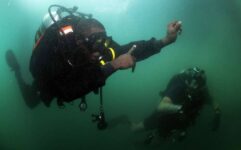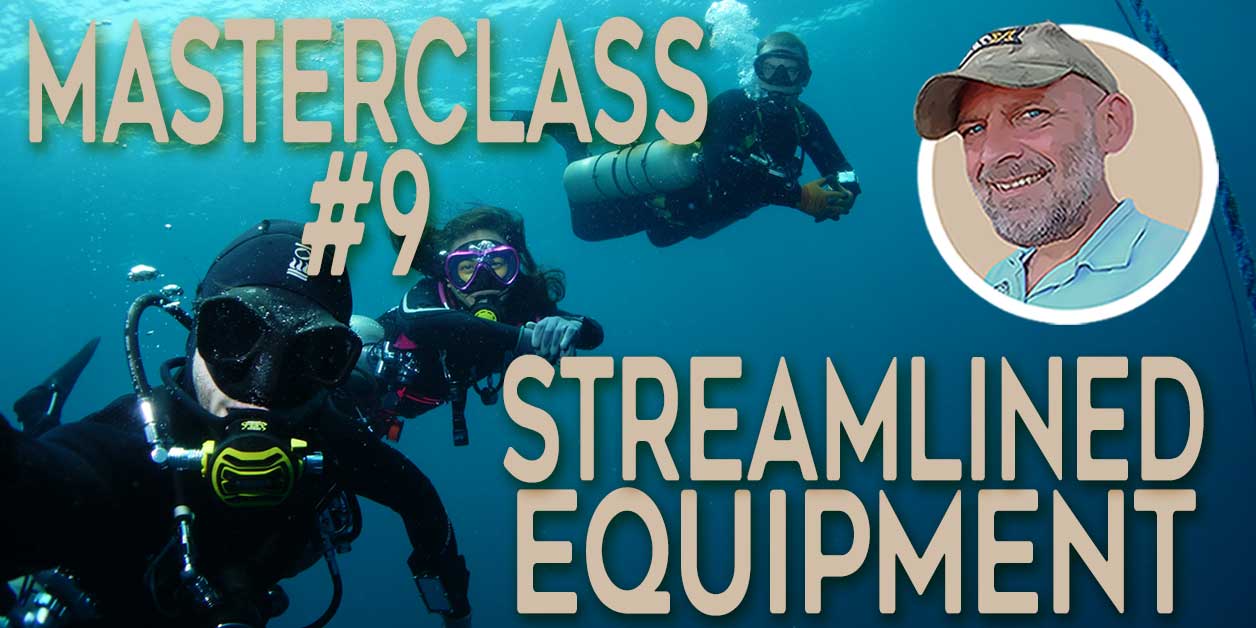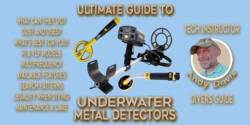What is the Balanced Rig Principle in Diving?
The balanced rig principle is a best practice approach for divers to configure their equipment selection and weighting. The reasoning behind this principle is to avoid circumstances where the diver wouldn’t be able to ascend if they suffered a BCD buoyancy failure when diving.
Ideal diving weighting for neutral buoyancy
The primary purpose of weighting for scuba divers is to ensure that they can remain neutrally buoyant at all times in the water. The amount of weight that a diver requires corresponds to the greatest positive buoyancy they will have during their dive.
The greatest amount of positive buoyancy that a diver encounters is when they ascend to shallow water at the end of their dive. The majority of their gas weight will have been consumed and, if wearing a wetsuit, there will be no material compression from pressure at depth.
When ideally weighted, the diver should be neutrally buoyant when holding their final ascent stop with zero gas in their BCD.
The most accurate weight check you can perform is to hold a shallow stop (3-5m) with minimal reserve gas in your cylinder; empty your BCD fully and progressively remove weight until you are floating neutrally without effort.
Finding your ideal weighting
Conduct a floating weight confirmation. Descend to 3-5m depth and hover with approx 35 bar (500psi) in your cylinder/s. Purge all of the air from your BCD and observe your buoyancy. If you sink, remove weights until you attain neutral buoyancy.
Negative buoyancy and ascending
Early in the dive profile, there is a greater weight of unconsumed gas and is likely to have some degree of depth compression reducing the buoyancy of their exposure protection. During that time, the diver will be negatively weighted; and thus reliant on adding gas to their BCD to achieve neutral buoyancy.
However, determining sufficient weighting for neutral buoyancy on the ascent is not the only consideration for a scuba diver.
Should the diver become immobilized or encounter a failure of their BCD system, prudent safety dictates that every diver must retain the capacity to:
- Ensure positive buoyancy on the surface.
- Ensure they can ascend to the surface, even if unable to inflate/retain gas in the BCD.
Historically, a ditchable weight belt is the simplest solution to achieving those aims. That simplicity makes it the chosen method for entry-level scuba training in most agencies. Dropping the weight belt ensures a one-way trip to the surface.
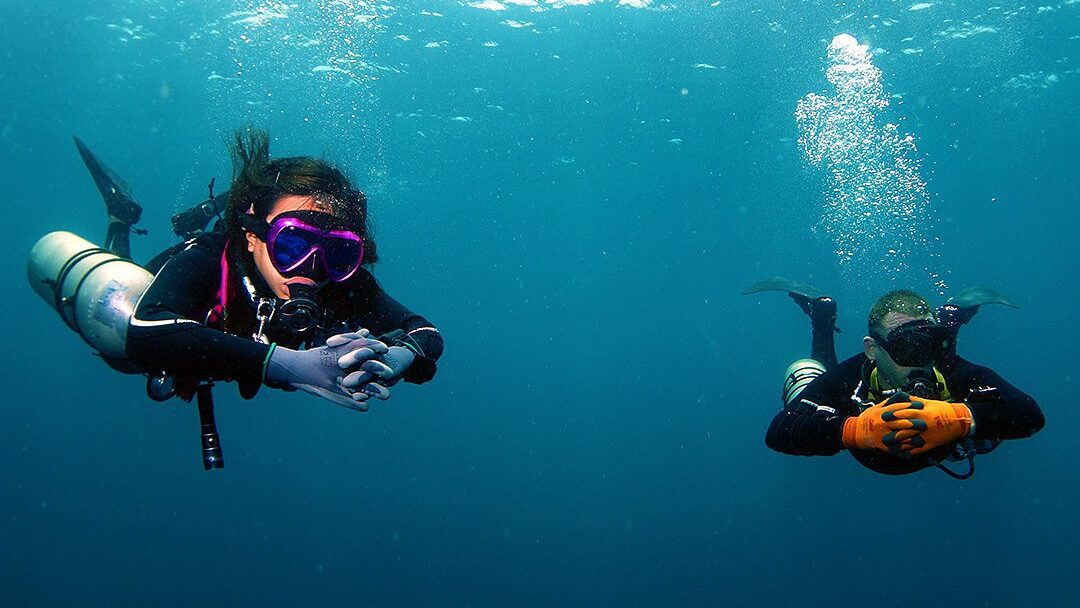
However, as divers progress beyond entry-level, they may invest in more advanced diving equipment and practices. BCDs with a crotch strap, such as most backplate/wing and sidemount designs, do not ideally facilitate weight belt release.
Advanced divers typically prefer a more sophisticated approach that integrates more of their weighting onto their rig in ways which cannot be jettisoned in a buoyancy emergency; steel or aluminium backplates or the inbuilt weight stowage systems popular on many sidemount BCDs.
That preference isn’t just determined by the convenience of not having to wear a weightbelt, but also because the risk of accidentally dropping a weightbelt becomes much more consequential on deeper dives; especially when decompression stops are mandated. An uncontrolled ascent will injure a technical diver, and could possibly kill them. In contrast, the far bigger risk to novice divers is drowning because they couldn’t attain positive buoyancy during an emergency out-of-gas ascent.
When the majority, or entirety, of the diver’s lead weight, cannot be jettisoned in an emergency the diver needs an alternative solution for getting to the surface if their BCD fails.
Redundant buoyancy as a solution
The most direct and seemingly simplistic solution for BCD buoyancy failure is to have two BCDS; if one fails the diver can still ascend on the second. Most manufacturers of technical and sidemount diving BCDs offer versions that incorporate two separate internal buoyancy bladders.
Redundant bladder systems have an intuitive appeal to divers: carry two of everything critical to survival as risk mitigation for catastrophic failures.
However, there are downsides that many divers neglect to consider:
- Redundant bladder BCDs necessitate more complex hose management
- There are increased points of failure; both equipment and the potential for human errors
- There is no buoyancy provision for out-of-gas scenarios
- The diver needs to gain and maintain a reliable skillset for using them
In some circumstances, a drysuit can be considered as redundant buoyancy. The diver has to decide whether their BCD or drysuit is their primary method of buoyancy control.
The need for a reliable skillset
It is tempting to consider purchasing equipment redundancy as an adequate contingency for foreseeable risks. However, the reality is that dealing with emergencies demands both the right equipment and a reliable skillset under stress.
Simply buying a redundant bladder BCD should not empower you to assume that you are safe. Risks are not mitigated simply by swiping a credit card; it shouldn’t be a matter of “buy and disregard”. There is a need for correct training and frequent skill maintenance practice to operate a redundant bladder BCD.
Few divers have either the motivation or opportunity to practice their contingency skills routinely enough to retain a skillset that would remain reliable under the physical and psychological stress of a real emergency.
If the skillset is neglected, contingency solutions are only hypothetical, not practical. Hypothetical solutions rarely perform in real life as a diver assumes or expects.
Increased failure points
Redundant bladder BCDs require a gas supply for inflation. This typically involves a secondary low-pressure inflator (LPI) system from a primary cylinder. Those extra components on your regulator are susceptible to failure; o-rings, hoses and connectors all fail frequently.
As you add more potential points of failure to a system, the odds of a failure occurring increase proportionally. Failures in gas supply systems can result in the loss of breathing gas and must be considered the most immediately life-threatening type of failure.
Risk management is always a process of balancing. Divers should consider the balance between the infrequent, less critical, risk of buoyancy failure versus the more frequent and severe risk of regulator failure and resultant gas loss.
It is also important to consider human error as a potential failure point. Increasing the complexity of equipment necessitates more complex procedures and protocols. As operating complexity increases so does the frequency of human error. Simplicity has strong merits, especially when subjected to physical and psychological emergency stress.
Increased complexity
Diving with a redundant bladder BCD is not a case of “plug it in and go”. Competent instructors will always train divers to leave their redundant LPI disconnected from the redundant bladder; an approach recognized by learning lessons from numerous real-world diving fatalities, such as the death of Annelie Wada in 2013.
Minor LPI leaks into the BCD are not uncommon; if they occur into the redundant bladder at depth they can subsequently cause an uncontrolled rapid ascent. When that happens, the diver needs the exceptional presence of mind to consider dumping from their redundant bladder; especially when aware they’ve never added gas into it. It may seem obvious and easily diagnosed as you read this, but it has killed divers in real life.
With that in mind, the protocol for switching to a redundant bladder necessitates swiftly locating and connecting both elements of the LPI.
That might be easy during shallow skills practice; it’s a little different if you’re actually plummeting to the depths from a BCD failure. There will be the shock of unexpected danger, plus the need to equalize ears as you accelerate downwards, all the while finning frantically to slow your descent.
It’s remarkably easy to fumble seemingly simple protocols when under real-world emergency stress. Especially so if that skill hasn’t been practised routinely in months or years.
None of this is to suggest that a redundant bladder BCD cannot be an effective solution for buoyancy failures. It just should not be considered only in terms of positive attributes while discounting the negative drawbacks.
You cannot just equip yourself with a redundant bladder BCD and pat yourself on the back for diligent risk management. When appreciated realistically, it is a far less appealing solution than face value may suggest.
Lift bags as a solution
Another option that is quite frequently discussed or taught as a solution for BCD buoyancy failure is to ascend using a lift bag or DSMB. The techniques for this vary; either holding a traditional lift bag in your hands for support on ascent or deploying a DSMB and supporting yourself off the reel/spool as you wind upwards to the surface.
These solutions are workable but are very dependent on skillset. I have no objection to them in principle, but in practice, I often see divers who have only ever rehearsed doing these ascents in shallow water and calm, controlled conditions. Those scenarios don’t reflect the stressors of a real emergency which challenge skillsets.
On many occasions, those rehearsal ascents also don’t factor in other skill demands the diver might have to perform; such as gas switches on decompression ascents. In many cases, there won’t be current, surge or flow. There won’t be waves on the surface. Practice ascents might only be from a tiny fraction of the depths that the diver typically dives at.
Buoyancy failure ascents using lift bags or DSMBs have to be taught realistically; reflecting the actual demands the diver will face in real-life emergencies. Once taught effectively, the diver has to retain the very perishable skillset: they need to practice it routinely or it will swiftly fade from neglect.
Performing a skill adequately years ago on a training course doesn’t suggest you could do it effectively tomorrow if an emergency arose.
Lift bags and DSMBs should not be considered a satisfactory solution for BCD failures unless the individual diver has the motivation and opportunity to regularly practice the skillset required.
Balanced Rig principle as a better solution
An alternative to BCD redundancy is the Balanced Rig principle. This is a more holistic approach to your entire equipment configuration that ensures you can always ascend to the surface if a BCD failure occurs; no extra equipment, specific training or complex emergency procedures are required.
The Balanced Rig principle simply requires a higher-level understanding of the buoyancy dynamic over the course of a dive. It considers the relative buoyancy characteristics of all the diver’s equipment, especially cylinder buoyancy, and utilizes that knowledge to guide equipment selection so that the diver is never excessively negative in the water.
The Balanced Rig principle: buoyancy variation
As previously mentioned, the diver is most negatively buoyant when reaching the bottom at the outset of their dive. If using a wetsuit they will have lost buoyancy due to material compression. Their cylinders will be full and the weight of that gas adds negative buoyancy.
As the dive progresses they will consume gas and the reduction in weight makes them increasingly more buoyant. Finally, as they ascend, their wetsuit decompresses and gains buoyancy. They will have the least negative buoyancy at the end of the dive in shallow water.
The diver’s weighting should be determined by achieving neutral buoyancy when they are least negative; at the end of the dive with minimum gas reserves on their last stop before surfacing. When that weighting is calculated accurately, they should be neutral without any gas in the BCD. If gas is required in the BCD, then it is only compensating for superfluous weight.
Balanced Rig principle on the ascent
Accurately calculated weighting ensures that the diver will be ascending whilst only fractionally negative. If a BCD failure happens at the end of the dive, it should be an easy task to swim upwards.
Especially so as BCD buoyancy failures rarely preclude retaining some gas in the wing by positioning the failure location lower relative to the wing volume. For instance, if a lower-wing pull dump has failed, the diver can retain gas by adopting a vertical, head-up, position. If the LPI has failed at the top of a wing, the diver can ascend in a near-horizontal position, staying slightly legs upwards.
Personal experience: balanced rig principle and failure on the ascent
I actually experienced a major BCD failure on a technical dive some years ago. That failure occurred when diving with a wetsuit and carrying three cylinders. During a technical wreck penetration, I unknowingly tore off the lower pull dump on my wing when passing through a very tight restriction.
Amazingly, I didn’t even notice the failure until I tried to slow my descent approaching the first decompression stop. I reached back for the pull dump only to find a gaping hole in its place.
I hadn’t noticed the failure for two reasons: my weighting was optimized and I was consistently in horizontal trim, which naturally retained enough gas in my wing.
On that occasion, I completed 25 minutes of decompression without issue or drama. Correct weighting ensured I was near-neutrally buoyant anyway, and maintaining horizontal trim kept what little gas I needed inside my wing.
Balanced Rig principle on the descent
As I’ve already described, the diver is most negative at their bottom depth immediately following descent. Their BCD only has to compensate for the weight of gas in their cylinders and, if applicable, wetsuit compression.
For the typical recreational diver, that weight may be negligible. A typical AL80 cylinder is only 2 lbs negative when full. A wetsuit will only lose 2-4 lbs of buoyancy due to compression (3mm vs 5mm). The diver can fin upwards against four to six lbs of negative buoyancy; especially so if adding more buoyancy by maintaining a deeper breathing pattern.
Cylinder manufacturers typically provide detailed specifications, including the buoyancy characteristics of their tanks. It is easy to consult those specifications to determine exactly how much negative buoyancy a cylinder causes when it is full.
Gas weight becomes more consequential when greater gas volumes are needed on dives; using high-capacity cylinders or when carrying multiple cylinders. The diver should be aware of exactly how much negative buoyancy is present.
If that buoyancy dynamic is known then it can be addressed intelligently.
Personal experience: balanced rig principle and failure on the descent
I experienced a technical sidemount student who had a catastrophic wing failure at the outset of a training dive; the LPI corrugated hose had partially torn away from the BCD.
Because the LPI on a sidemount system routes from the lower wing, there was ample gas held in the wing whilst floating on the surface pre-descent. The issue only became apparent when the student attempted to add gas to their wing as they approached the bottom depth.
Again, weighting was optimized and horizontal trim was maintained. Even when wearing a wetsuit compressed by nearly 5 atmospheres of pressure and carrying three cylinders, we ascended without drama. I merely had to extend my arm, which the student lightly rested their weight upon with their hand, and we rose together in horizontal trim.
The Balanced Rig principle: ditchable weight
Contrary to some misunderstandings, the balanced rig principle does not preclude ditchable weight. It cannot. It simply considers what form the diver’s weighting might be; not just lead on a belt. Negatively buoyant equipment can be jettisoned also.
The diver must retain the ability to remove sufficient weight to balance the negative buoyancy induced by gas weight and, where applicable, wetsuit compression when they reach the bottom depth of their dive.
This demands a calculated approach that considers the balance between ditchable and non-ditchable weight in one’s configuration.
For sidemount and technical divers, the most readily removable source of negative buoyancy is cylinders. Deco/stages or a sidemount primary cylinder can easily be removed and passed to a teammate. This should be sufficient to allow the diver to ascend by finning.
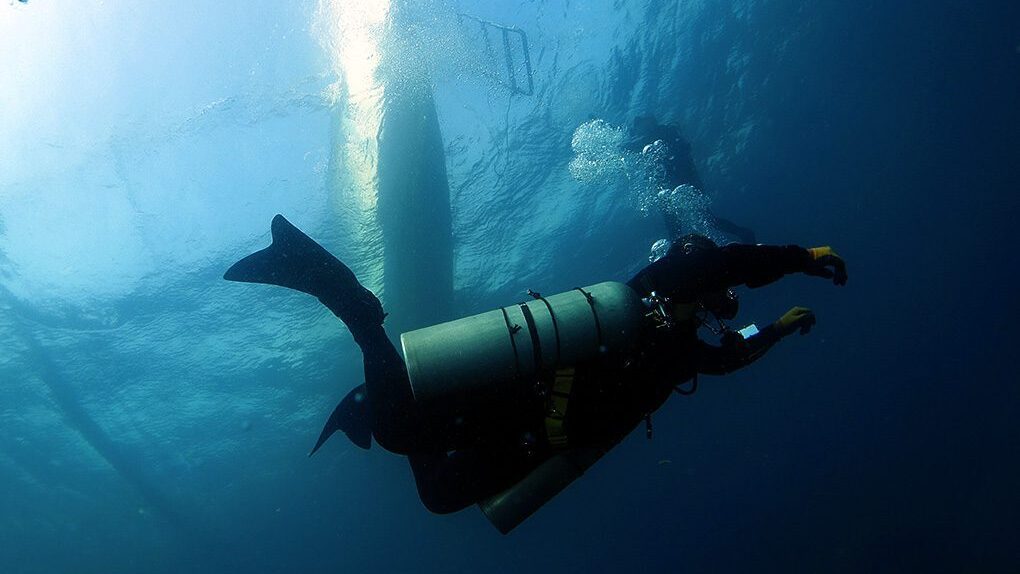
Handing off, or even jettisoning, that additional gas is not a critical sacrifice at the outset of the dive: the diver only needs sufficient gas to surface, and a technical diver has not incurred significant decompression stops.
In addition to cylinders, advanced divers also typically carry a spectrum of other negatively buoyant gear: primary lighting, reels, tools etc. This all contributes to your weight balance, and it can all be removed underwater to facilitate an ascent after buoyancy failure.
A rig is not ‘balanced’ if there is no ditchable weight. The ‘balanced’ aspect of weighting considers the balance between ditchable weight (ballast) and non-ditchable weight; the equipment integral to their rig provides a proportion of their weighting needs.
The Balanced Rig principle: cylinder selection
Debatably the most important consideration when applying the Balanced rig principle is cylinder selection. Cylinders need to be considered with respect to their buoyancy dynamics and how that relates to your overall buoyancy calculation.
The Balanced Rig principle: aluminium cylinders
Aluminium cylinders are more lightweight; shifting from slightly negative at the outset of a dive to slightly positive on the ascent. This makes them ideal for the application of the balanced rig principle. There isn’t an overwhelming and unresolvable amount of negative buoyancy on the descent, and when positively buoyant beyond the mid-point of the dive they actually start contributing to help you ascend.
The drawback to aluminium cylinders is that they aren’t available in larger volumes or higher pressures. There is no commonly available option beyond an AL100 (14L) cylinder pressured to 3000psi (200 bar).
If the diver needs more primary gas volume than two aluminium, cylinders can provide, they have the option of carrying additional stage cylinders of bottom gas. This does add some complexity to the dive but has the immediate advantage of ensuring that the diver always has weight to jettison.
The Balanced Rig principle: steel cylinders
There are two reasons why a diver might opt to use steel cylinders: to provide additional weight when diving with very buoyant exposure protection and to supply a significantly larger volume of gas.
I have seen steel cylinders up to 20L in capacity, and able to be filled to pressures of 300+ bar. They can supply an incredible volume of gas for longer/deeper technical and overhead dives and avoid the need to carry additional stage cylinders. It’s a very convenient, but also a less inherently flexible solution.
Steel cylinders are ubiquitous in temperate and cold-water diving regions where thicker exposure protection is necessary. The increased weight of the cylinders allows the diver to reduce the amount of lead that they carry.
That’s a perfectly fine solution when diving with a dry suit. The suit’s buoyancy does not reduce on the descent because the diver will continuously add gas into the suit as they descend to equalize pressure and prevent suit squeeze.
Using steel cylinders as a weighting strategy for thicker wetsuits is not fine. Wetsuits compress at depth. The balance between negatively buoyant cylinders and the positively buoyant suit is erased. This leads to the diver becoming hazardously negative at depth.
The Balanced Rig principle: wetsuits versus drysuits
Drysuits may be considered an effective form of redundant buoyancy provided that everything else in the diver’s configuration is intelligently calculated and optimized. This makes them an ideal choice for advanced divers in many circumstances; enabling the use of higher-capacity steel cylinders without detriment to the buoyancy dynamic.
However, a drysuit shouldn’t be selected for its inherent buoyancy provision alone; the thermal characteristics have to be suitable for the diving environment. Even lightweight dry suits with minimal undergarments can be excessively hot in tropical waters.
Beyond simply risking heatstroke, overheating promotes dehydration, which is a predisposing factor to decompression sickness (DCS). If you are ending dives with your undergarments soaked through with sweat, then a drysuit is not really suitable for your diving.
Diving in a wetsuit avoids the risk of overheating and dehydration in hot climates. They are also much more affordable to purchase and easier to maintain. The drawbacks are that they don’t supply any redundant buoyancy and they lose buoyancy at depth. This makes accurate calculation of the Balanced Rig principle even more critical for safety.
The use of wetsuits with most steel cylinders has become increasingly ill-advised over the last few decades. It is commonly considered an imprudent solution because the diver will be excessively negative at depth. This forces reliance upon using a redundant bladder wing for ascent should a primary wing failure occur.
Drysuits and steel cylinders complement each other; whereas wetsuits and steel cylinders are antagonistic. A holistic approach to equipment configuration places emphasis on complementary equipment choices that don’t create problems.
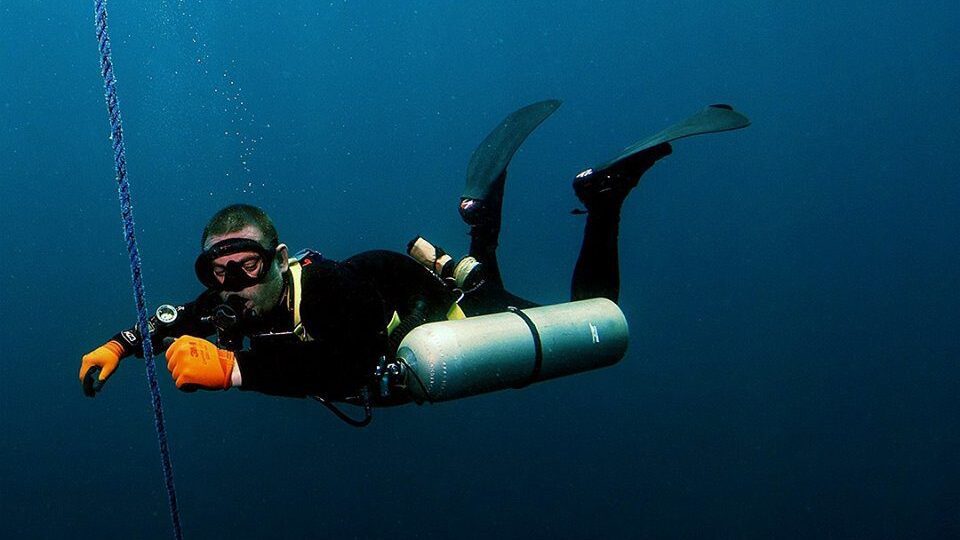
Avoiding a problem arising is always preferable to finding solutions for addressing problems. You should select equipment intelligently to serve specific purposes.
If you’re diving in the tropics using a wetsuit, choose aluminium cylinders and avoid being dangerously overweighted at the outset of your dives. Without the flexibility enabled by a drysuit proving an additional source of buoyancy, the flexibility of using aluminium cylinders becomes a significant safety advantage.
If you’re diving a drysuit in cooler waters, then steel cylinders can contribute to your weighting requirements without the need for a redundant buoyancy BCD.
In short, the “old-school” approach of using extra-thick wetsuits with heavy steel cylinders was refuted on safety grounds decades ago. There’s simply no excuse for it: invest in a drysuit if your diving has reached a level that demands higher-capacity steel cylinders. Prioritize safety over convenience.
The Balanced Rig principle: other equipment
As previously mentioned, consider every item in your equipment configuration from the perspective of its buoyancy characteristics. Factor those considerations into your decision-making to apply the Balanced Rig principle. Smaller equipment components may seem innocuous, but the effect they have on your overall buoyancy is cumulative.
If your configuration errs towards being too negatively buoyant, consider how you can modify the configuration. Choose neutrally buoyant fins. Use a neoprene sleeve around battery canisters to compensate for buoyancy. Enough small tweaks and attention to detail can have profound effects when striving for overall balance in your buoyancy dynamic.
The Balanced Rig principle: test and prove
Achieving the Balanced Rig principle with your equipment configuration is about attention to detail, accurate calculation and critical thinking in your gear selection. However, your calculations and assumptions must be proved through testing for them to be considered reliable.
As you tweak, refine and adapt your diving gear over time, do create opportunities to confirm that you can ascend with it if your BCD fails. Do that from a variety of depths and at differing phases within your dive.
The process is simple; deflate your BCD and observe your actual buoyancy. Confirm that you can fin upwards without significant exertion. Practice holding ascent stops without gas in your BCD; pass off negatively buoyant items to a teammate if necessary to facilitate doing that.
You must confirm that you can ditch enough weight to survive. Know exactly what that is and how you will do it.
If that cannot be achieved, resolve the problem.
Always remember that hypothesis, assumption and imagination is not effective risk management. Only tried and tested solutions count.
For further details on how to create a Balanced Rig read:
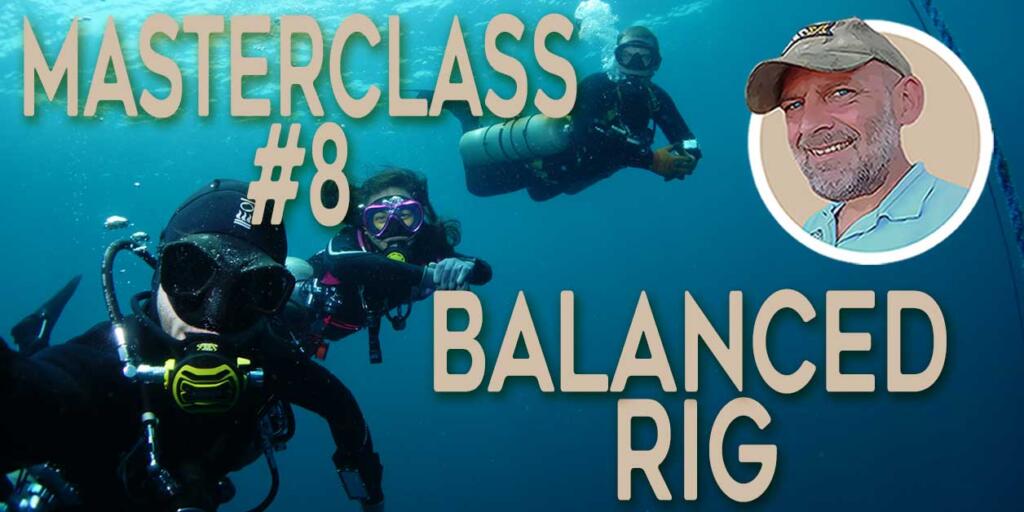
About The Author

Andy Davis is a RAID, PADI TecRec, ANDI, BSAC, and SSI-qualified independent technical diving instructor who specializes in teaching sidemount, trimix, and advanced wreck diving courses.
Currently residing in Subic Bay, Philippines; he has amassed more than 10,000 open-circuit and CCR dives over three decades of challenging diving across the globe.
Andy has published numerous diving magazine articles and designed advanced certification courses for several dive training agencies, He regularly tests and reviews new dive gear for scuba equipment manufacturers. Andy is currently writing a series of advanced diving books and creating a range of tech diving clothing and accessories.
Prior to becoming a professional technical diving educator in 2006, Andy was a commissioned officer in the Royal Air Force and has served in Iraq, Afghanistan, Belize, and Cyprus.
In 2023, Andy was named in the “Who’s Who of Sidemount” list by GUE InDepth Magazine.
Purchase my exclusive diving ebooks!
Originally posted 2018-03-07 23:56:48.







